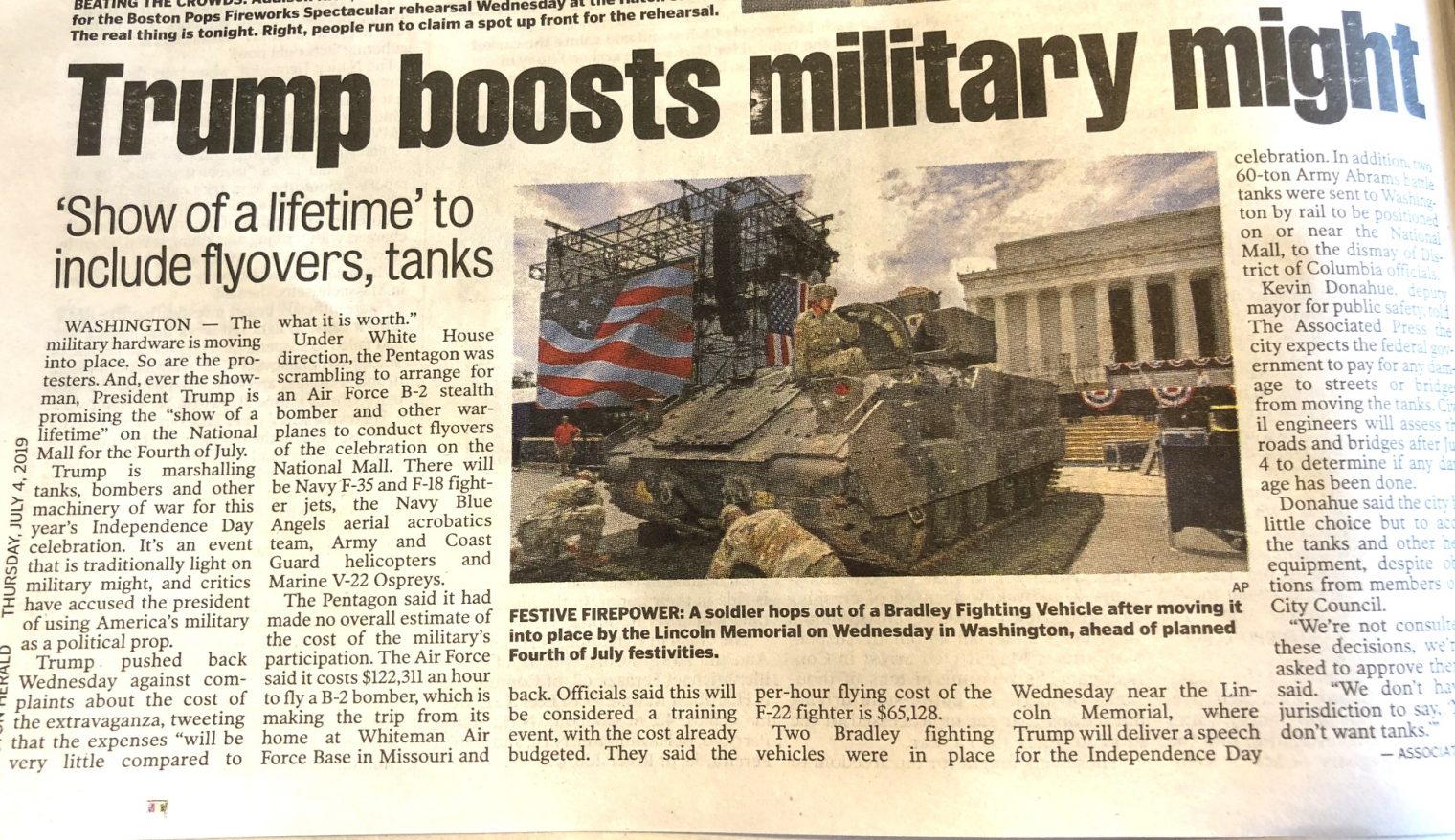… as told by the New York Times and the Boston Herald.Pictures of the physical papers, courtesy of an FBO:

One difference is that the Trump-obsessed NYT put this story at the top left of the front page while the Herald buried it within the interior of the paper, saving the front page for local stories.
For folks who experienced this in person or on TV, how was the show in D.C. that got American newspapers so excited?
(Also, I think this is a perfect example of why living in the Washington, D.C. is great. Americans in Hawaii, Alaska, Kansas, etc., get taxed to pay for a free air/tank-show that can be consumed only by those who are physically in D.C.)
Separately, why do we have human-occupied tanks as part of our military? Wouldn’t it make more sense to have robotic/remote-controlled vehicles? Also, what chance do tanks stand against far more nimble anti-tank helicopters and airplanes (e.g., the Mi-24 or the A-10 Warthog)? Is the idea that we use tanks against lightly armed opponents, such as ISIS?

Phil: Tanks are an absolute necessity for offensive ground operations, especially in urban environments. Tanks have to be protected from attacks from the air by other assets, either surface-to-air missiles or fighter jets. Also, helicopters can’t really be used in urban environments because they will be shot down instantly.
It is also interesting how flyovers with B2s and F-35s, which can both carry nuclear weapons, are not menacing but tanks are.
The problem with unmanned vehicles is the datalink. Not a problem against irregulars but near-peer adversaries are likely going to work very hard to sever that. Full autonomy is one answer but friendly fire problems are bad enough with humans in the loop now.
As for tanks, I suspect if you’re dealing with US tanks you’ve already lost. It’s unlikely we’d commit ground forces without some degree of air superiority and if we have that and armored divisions on the ground then the endgame is likely in sight as the US Army/USMC are pretty hard to stop.
The bigger question in my mind is whether anti-ship ballistic missiles and long-range SAMs can make gaining air superiority within say 200 miles of the Chinese coast prohibitively expensive. It seems likely that the Chinese could put up a hundred or more missiles per plane or capital ship, and like Stalin said, “quantity has a quality all its own.” It’s not an expeditionary strategy but the Chinese seem largely uninterested in power projection.
Another thing to consider: those aren’t actually tanks, they’re infantry fighting vehicles. Their purpose is to transport an infantry squad into battle while providing protection from small arms and artillery, and providing significant firepower to back them up.
IFVs are indeed vulnerable to aircraft (not to mention actual tanks), but as with tanks they’re supported by infantry carrying shoulder-launched surface to air missiles, dedicated air defense vehicles with surface to air missiles and/or autocannons, and friendly aircraft. In theory, ground attack aircraft and helicopters are actually pretty vulnerable.
In practice, we don’t really know how this would all work in practice because the US military is used exclusively to massacre third world peasants who don’t have any effective means to defend themselves.